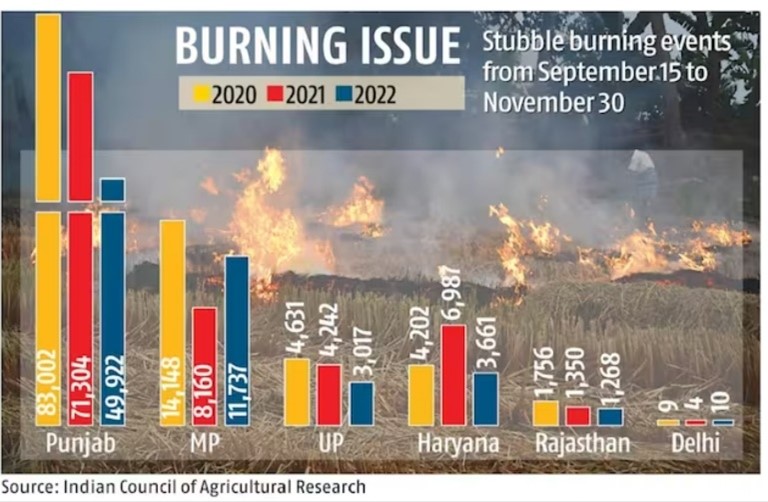IISER Study Findings on Stubble Burning
Context: The Bhopal-based Indian Institute of Science Education and Research (IISER) collaborated with the International Maize and Wheat Improvement Center (CIMMYT) to develop satellite-based technology that offers insights into GHGs emitted from the stubble burning.
- Rise in greenhouse gas emissions: Emissions of carbon monoxide (CO) and greenhouse gasses(GHGs) increased by approximately 75 per cent over the decade.
- The emissions rise from about 19,340 gigagrams per year in 2011 to roughly 33,834 gigagrams per year in 2020.

- Leading emitter state: Punjab emerged as the leading emitter, with 27 per cent of its cultivated area subjected to stubble burning in 2020.
- It was closely followed by Madhya Pradesh, which accounted for 30 per cent of India’s total burned area in the same year.
- Primary contributing crops to emissions: Rice, wheat, and maize accounted for 97 per cent of India’s agricultural burning emissions, with rice being the largest contributor at 55 per cent.
- Emission reduction efforts: Although efforts by the Centre and state governments have reduced incidents of crop residue burning, particularly during the kharif harvest season since 2021, the practice has not been completely eradicated.
- States like Haryana have successfully reduced paddy stubble burning through a mix of financial incentives, subsidised machinery, penal provisions, and awareness campaigns.
![]() 29 Sep 2023
29 Sep 2023
